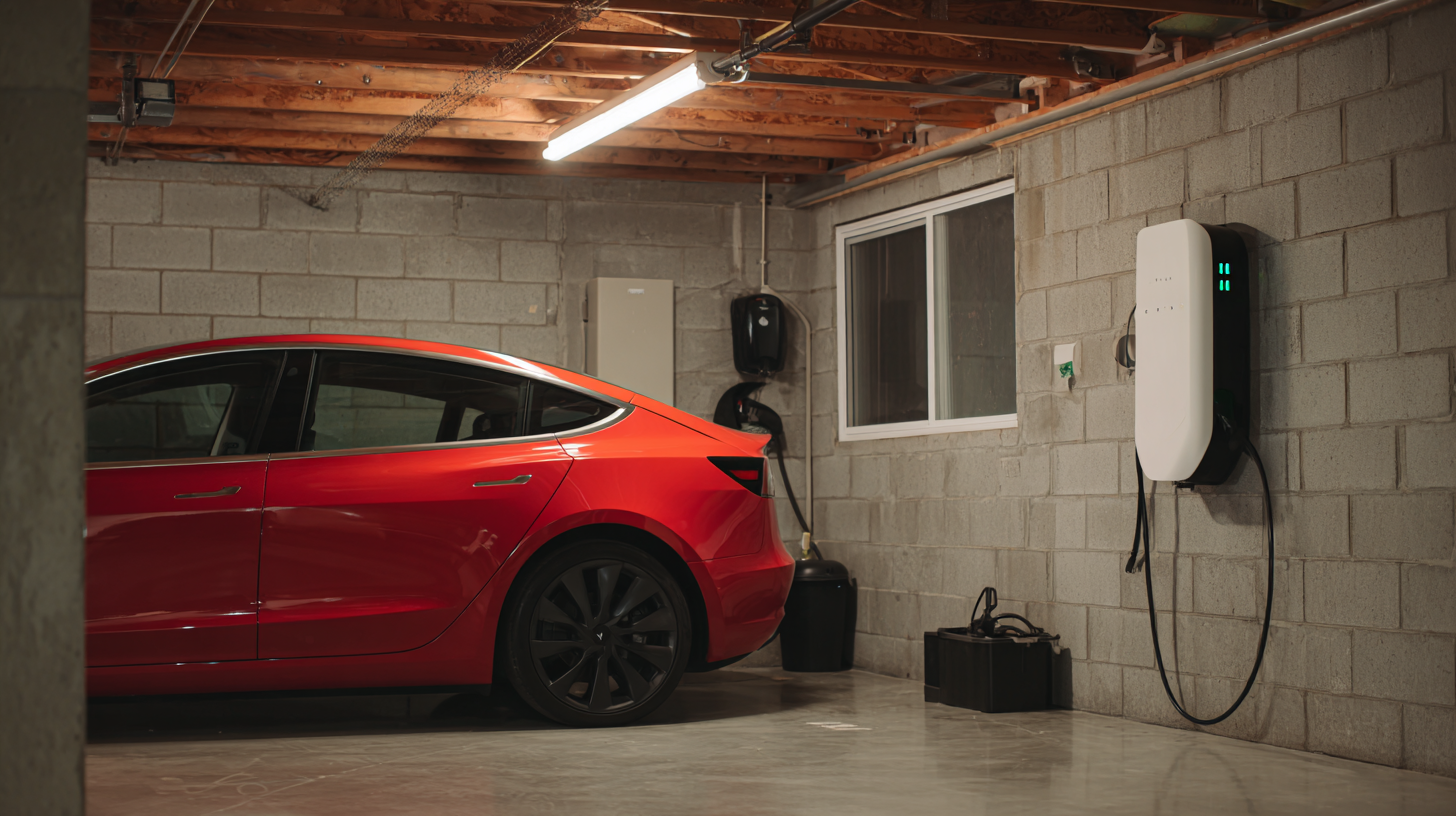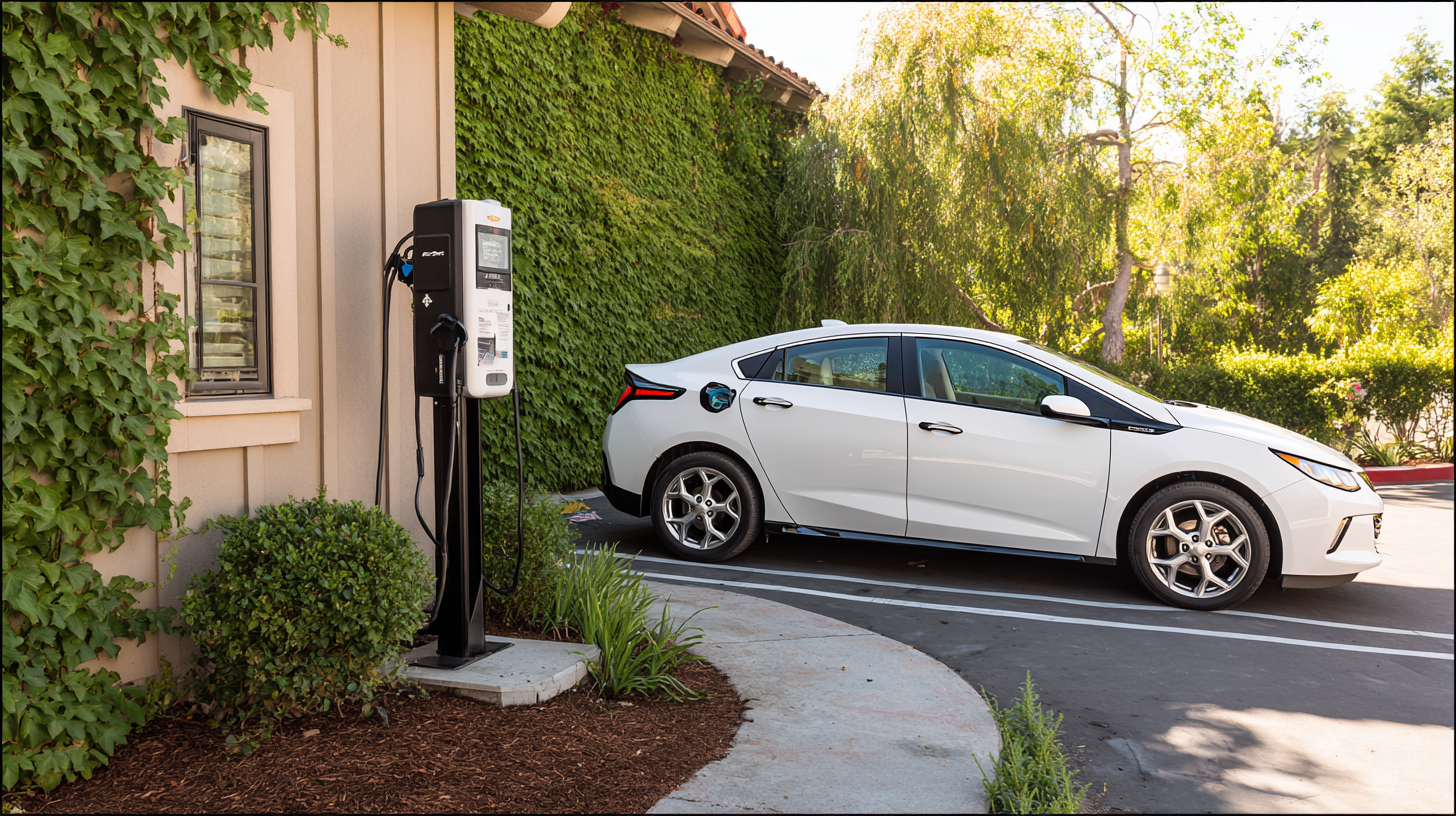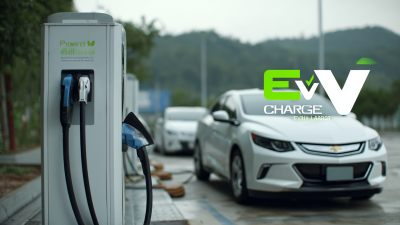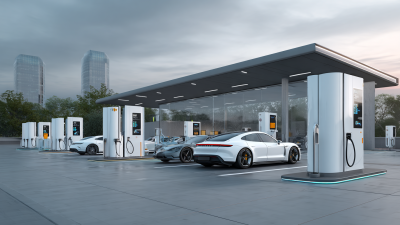The rapid evolution of electric vehicle (EV) technology has ushered in a new era for personal transportation, with the Level 2 Home Charger playing a pivotal role in this transformation. According to a report by the International Energy Agency (IEA), global electric car sales reached 6.6 million units in 2021, marking a 108% increase from the previous year. With this surge, the demand for efficient charging solutions has never been more critical. Level 2 Home Chargers, which can fully charge most EVs in just a few hours, provide a convenient and cost-effective option for EV owners, encouraging greater adoption and reducing range anxiety. Furthermore, a study by BloombergNEF forecasts that by 2040, electric vehicles will account for over 50% of new car sales worldwide, with charging infrastructure enhancements being key to this shift. The impact of Level 2 Home Chargers on EV adoption rates cannot be overstated, as they facilitate the transition toward a more sustainable automotive future.

Level 2 home chargers have emerged as a game-changer for electric vehicle (EV) owners, significantly enhancing the convenience and efficiency of charging at home. Unlike standard Level 1 chargers, which typically plug into a standard outlet and provide a slower charge, Level 2 chargers are designed to deliver higher amperage and voltage, allowing EVs to charge more quickly. This means that on an average night, an owner can achieve a full charge, making it easier than ever to rely on an EV for daily commuting and long trips alike.
When considering the installation of a Level 2 charger, it's essential to evaluate your electrical system and space requirements. A licensed electrician can help ensure that your home can accommodate the charger’s power supply. Furthermore, many Level 2 chargers come with smart features, such as scheduling capabilities and energy monitoring, which can help maximize charging efficiency and reduce costs.
**Tips for EV Owners:** Invest in a charger with Wi-Fi connectivity that allows you to manage charging via a smartphone app. Additionally, check for federal or local incentives for installing EV chargers, which can significantly offset initial costs. Finally, familiarize yourself with the optimal charging times that can take advantage of lower electricity rates during off-peak hours.
| Feature | Benefits for EV Owners | Impact on Adoption Rates |
|---|---|---|
| Faster Charging Speeds | Reduces charging time significantly, allowing for more convenient use. | Encourages potential EV buyers who are concerned about charging times. |
| Home Installation | Provides the convenience of charging at home without reliance on public stations. | Increases confidence in EV ownership, leading to higher adoption rates. |
| Compatibility with Smart Technology | Allows for scheduling charging times to take advantage of lower electricity rates. | Attracts tech-savvy consumers and eco-conscious EV owners. |
| Enhanced Safety Features | Reduces risk of fire or electrical hazards compared to standard outlets. | Reassures potential buyers regarding the safety of charging at home. |
| Cost of Charging | Typically cheaper than using public charging stations. | Makes EVs more attractive financially, promoting further adoption. |
As electric vehicle (EV) adoption surges across the United States, the need for efficient and accessible home charging solutions becomes increasingly critical. Level 2 chargers, which offer faster charging capabilities compared to their Level 1 counterparts, play a crucial role in facilitating this transition. While Level 1 chargers provide a basic, slow charging option, they can be insufficient for the demands of modern EV users who often require quicker turnaround times. Upgrading to a Level 2 charger can dramatically enhance the convenience and usability of EV ownership, making it an attractive option for prospective buyers.

Tips: When considering an upgrade to a Level 2 charger, evaluate your typical driving habits and daily charging needs. If you frequently commute long distances or use your vehicle multiple times a day, the switch could save you precious time. Additionally, take into account the installation requirements and potential incentives available in your area for installing home charging stations, as these can offset initial costs and make the transition smoother.
In the evolving landscape of EV infrastructure, having the right type of charger is essential. As the market is projected to grow significantly by 2033, the investment in a Level 2 charger not only supports faster charging at home but also aligns with the broader trend of expanding electric mobility. Embracing this technology ensures that you stay ahead in the shift toward more sustainable transportation solutions.
As the adoption of electric vehicles (EVs) continues to rise, the importance of Level 2 home chargers becomes increasingly prominent. According to industry reports, homes with Level 2 chargers can reduce charging times by up to 50% compared to standard Level 1 chargers, significantly benefiting users who rely on their vehicles for daily commutes. However, the installation of these chargers must be approached with caution to ensure safety and efficiency.
When installing a Level 2 charger, it's crucial to consider several factors, including electrical capacity and local regulations. Many homeowners may underestimate the need for a proper electrical setup, as highlighted by recent insights from EV owners who faced issues due to improper wiring. Adhering to installation guidelines not only enhances the longevity of the charger but also ensures optimal performance, reducing the risk of overheating and potential fire hazards. With proper installation, homeowners can enjoy a seamless charging experience that aligns with their electric mobility needs.

The increasing prevalence of Level 2 home chargers is a significant factor in the ongoing expansion of electric vehicle (EV) adoption. According to the projected growth of the North America DC Charger market, expected to rise from $1,040.6 million in 2025 to a staggering $26,152.5 million by 2040, with a CAGR of 24.0%, the demand for accessible charging solutions is evident. Level 2 chargers, which offer faster charging times compared to standard home outlets, can be pivotal in alleviating range anxiety for potential EV buyers, thus catalyzing sales and overall market growth.
For EV owners, the investment in a Level 2 charger can prove to be worthwhile, especially when considering both financial and practical factors. While the initial installation cost may be a concern, the convenience of home charging can lead to significant savings on fuel and maintenance in the long run. Moreover, as the EV market continues to evolve, properties equipped with EV charging infrastructure not only attract tech-savvy consumers but can also see an increase in property value. Those investing in these installations are likely to benefit from enhanced asset valuation, particularly as the demand for EVs and related infrastructure continues to surge.
The landscape of home charging technologies is evolving rapidly, significantly influencing electric vehicle (EV) market growth. Innovations in Level 2 home chargers are making them more accessible and appealing to consumers. As the electric vehicle market size is projected to balloon from $28.74 billion in 2022 to a staggering $115.7 billion by 2030, the advancement in home charging solutions is vital for this growth trajectory. The rise of wireless charging devices, expected to reach $22.67 billion by 2025 with a CAGR of 5.1%, highlights the growing preference for convenience and efficiency among EV owners.
Furthermore, energy management systems, particularly vehicle-to-home (V2H) technology, are set to revolutionize home energy usage. The V2H power system market is anticipated to rise from $9.35 million in 2024 to over $532.59 million by 2032, boasting an impressive CAGR of 24.28%. This technology not only offers a means of charging EVs at home but also allows the integration of renewable energy sources, enhancing the overall sustainability of electric vehicle ownership. As these innovations continue to develop, they will play a pivotal role in driving EV adoption rates and shaping the future of transportation.
This chart illustrates the growth in the number of Level 2 home chargers in relation to electric vehicle adoption rates over the past five years. The increase in home charging infrastructure is a significant driver for the rising popularity of electric vehicles.














